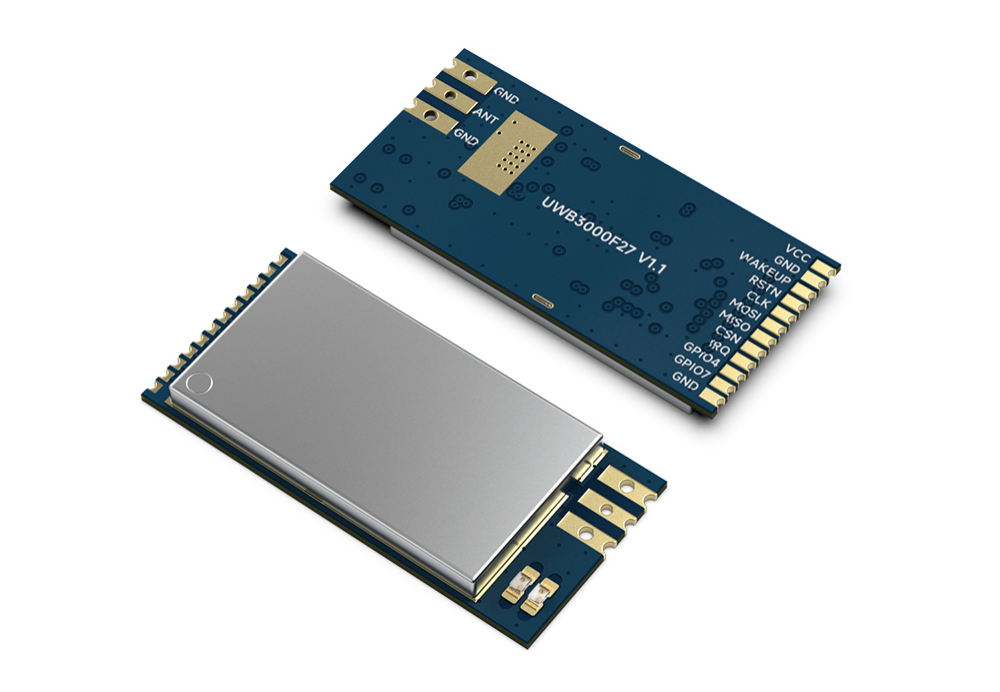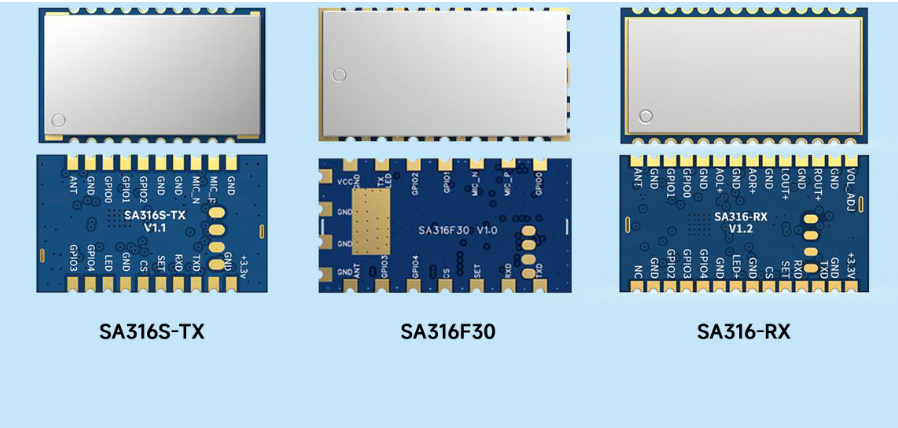How to choose a positioning module Recommend UWB modules to build a positioning system
UWB positioning modules are devices based on Ultra-Wideband (UWB) technology, utilized for achieving high-precision localization and identification of positions. These modules typically comprise UWB chips, antennas, RF front-ends, processors, and other components. They are employed to transmit and receive UWB signals and process data to calculate the target's position. The operational principle of UWB positioning modules relies on the characteristics of UWB signals. They measure the transmission time of the signals to determine the distance between the target object and the receiver. Utilizing multiple receivers and techniques like triangulation or the Doppler effect, these modules accurately compute the position of the target objec
UWB positioning modules are devices based on Ultra-Wideband (UWB) technology, utilized for achieving high-precision localization and identification of positions. These modules typically comprise UWB chips, antennas, RF front-ends, processors, and other components. They are employed to transmit and receive UWB signals and process data to calculate the target's position. The operational principle of UWB positioning modules relies on the characteristics of UWB signals. They measure the transmission time of the signals to determine the distance between the target object and the receiver. Utilizing multiple receivers and techniques like triangulation or the Doppler effect, these modules accurately compute the position of the target objec
Why is UWB positioning technology recommended for positioning modules?
UWB modules differ in their principles from technologies such as Bluetooth or WiFi modules. UWB radio technology is specifically designed for the physical characteristics of radio frequency signals to achieve real-time, highly accurate, and extremely reliable positioning and communication. This technology has redefined possibilities for new application scenarios. The advantages of UWB positioning technology include the following points。
Using Ultra-Wideband Signals: UWB systems transmit extremely short, high-energy pulse signals that occupy an exceptionally large bandwidth in the spectrum (exceeding the bandwidth of traditional communication systems). This characteristic allows UWB to transmit data across a broader range of frequencies.
Time Domain Positioning Technology: UWB systems utilize the precision of ultra-short pulse signals in the time domain for positioning. By calculating the time difference between the transmission and reception of these pulses, the propagation time of the signal can be determined and used for positioning. This time-domain positioning technology provides UWB with an advantage in precise positioning applications.
High-Speed Data Transmission: Despite each pulse being brief, UWB can transmit these pulses at very high rates. Leveraging the ultra-wideband frequency range, UWB can transfer data at high speeds, making it suitable for applications requiring high bandwidth.
Low Power and Low Interference: The narrow pulse signals transmitted by UWB possess lower energy density, thus typically causing minimal interference with other communication systems. Additionally, UWB systems often operate at low power consumption, giving them an advantage in certain wireless communication devices。
The UWB3000 series includes two models: UWB3000F00 and UWB3000F27. These are low-power, cost-effective UWB positioning modules developed by Sivers Semiconductors using the Decawave DW3000 IC series. They offer a transmission data rate of up to 6.8Mbps, enabling bi-directional long-range ranging, TDoA, and PDoA systems, with a positioning accuracy of 10 centimeters. Among them, the UWB300F27 is a high-power module with 27dBm (500mW) that incorporates an LNA, capable of achieving bi-directional communication, ranging, and positioning up to 1.5 kilometers (in open areas).

Using UWB3000F27 as a reference, let's compare positioning technologies such as WiFi, ZigBee, and Bluetooth.
From the table above, it can be seen that the positioning accuracy of WiFi, ZigBee, and Bluetooth is not sufficient, with large errors. RFID technology is difficult to achieve two-dimensional positioning and can only be used for entry and exit recognition. In addition, in terms of transmission rate, UWB can reach 6.8Mbps, which is a speed that other technologies find hard to achieve, such as Bluetooth which is generally at 1Mbps. Compared to other wireless communication technologies, UWB has advantages such as high-precision positioning, high data rates, strong penetration, low power consumption, and strong anti-interference capabilities.
The UWB module, by utilizing ultra-wideband spectrum and extremely short-pulse signals, demonstrates unique advantages in high-speed data transmission and precise positioning. Compared to other positioning technologies, UWB boasts significant advantages in terms of positioning accuracy, transmission distance, and construction costs.
 +86-755-23080616
+86-755-23080616
 sales@nicerf.com
sales@nicerf.com
Website: https://www.nicerf.com/
Address: 309-314, 3/F, Bldg A, Hongdu business building, Zone 43, Baoan Dist, Shenzhen, China





